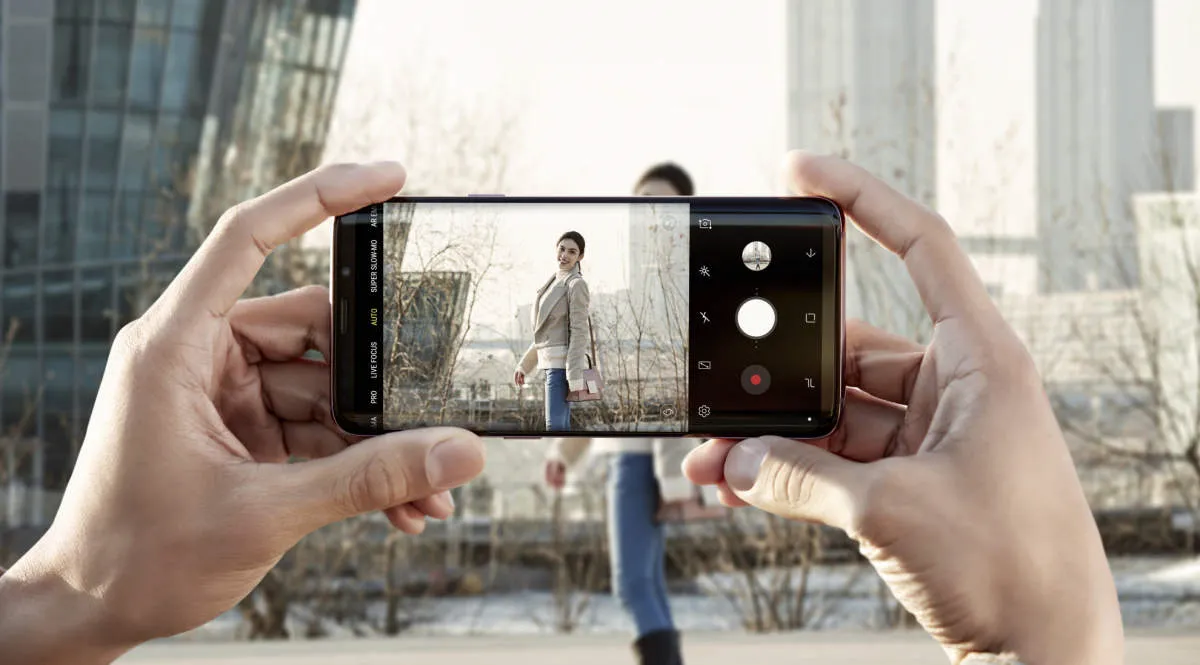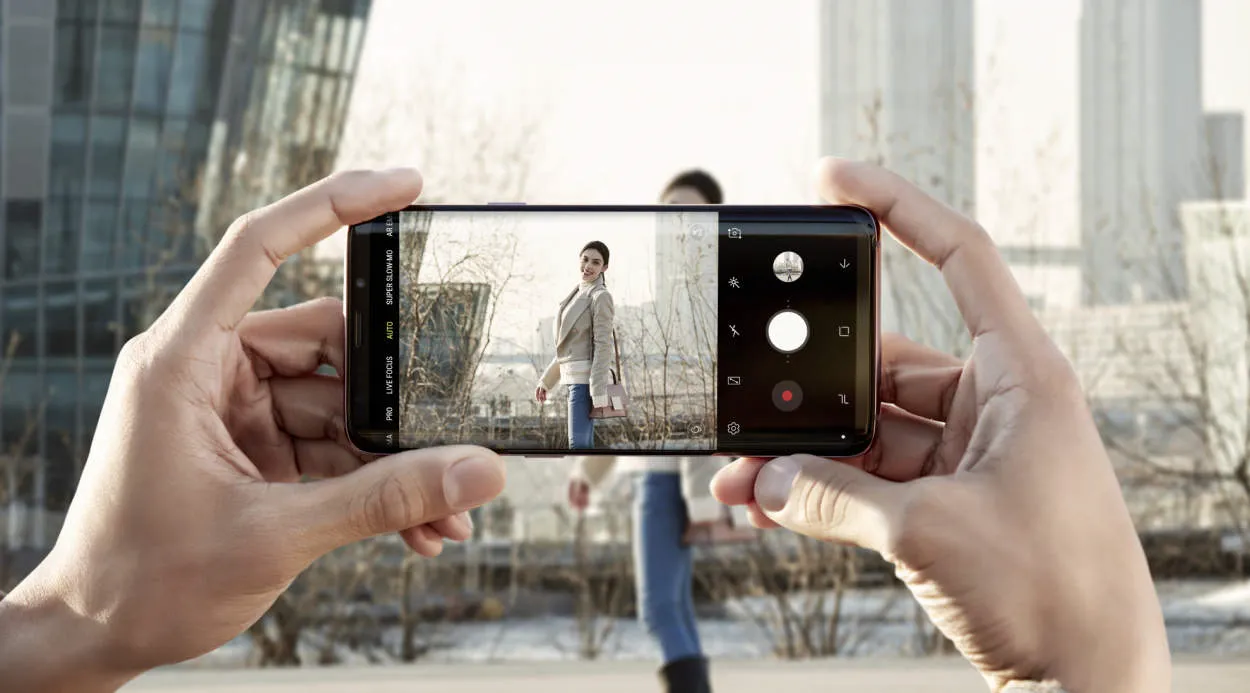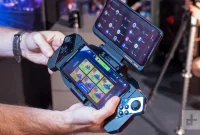Smartphone photography has come a long way in recent years, revolutionizing the way we capture and share our special moments. In this article, we will explore the evolution of smartphone cameras and help you choose the best camera phone that suits your photography needs.
Comparing Smartphone Camera Innovations

When it comes to smartphone photography, choosing the best camera phone can be a challenging task due to the rapid pace of innovation in this field. Manufacturers are continually pushing the boundaries of smartphone camera capabilities, striving to provide users with an unrivaled photography experience in the palm of their hand.
1. Dual or Triple Camera Systems
One of the significant advancements in smartphone cameras is the introduction of dual or even triple camera systems. These setups allow for enhanced photographic capabilities, such as optical zoom, wide-angle shots, and improved low-light performance. With multiple lenses, users can experiment with different perspectives and capture stunning photos in any situation.
2. Artificial Intelligence (AI) Integration
Smartphones now utilize artificial intelligence algorithms to optimize photo settings automatically. Whether it’s adjusting exposure, color balance, or scene recognition, AI integration enables users to capture professional-looking photos effortlessly. This technology continues to evolve, constantly learning and improving to deliver even better results.
3. Night Mode
Low-light photography has always been a challenge for smartphone cameras. However, with the introduction of night mode, many devices now excel in capturing stunning images in dimly lit environments. Night mode combines multiple exposures to reduce noise and enhance details, resulting in brighter and more beautiful nighttime shots.
4. Portrait Mode
Portrait mode has become a popular feature among smartphone users. By using depth-sensing technology, cameras can distinguish the subject from the background, creating a beautiful bokeh effect. This mode mimics the shallow depth of field typically achieved with DSLR cameras, making portraits visually appealing and professional-looking.
5. Pro Mode and Manual Controls
For photography enthusiasts who want complete control over their shots, pro mode and manual controls are essential features. These modes provide users with the ability to adjust settings such as ISO, shutter speed, and white balance, allowing for creative experimentation and better customization to capture the perfect shot.
The Rise of Computational Photography
Smartphone photography has come a long way in recent years, thanks to the rise of computational photography. This innovative technology has revolutionized the way we capture and process images on our mobile devices.
Computational photography involves using advanced algorithms and software to enhance the quality of photos taken with smartphones. It utilizes a combination of hardware and software techniques to produce stunning images with improved dynamic range, low-light performance, and depth of field.
One of the key features of computational photography is HDR (High Dynamic Range) imaging. This technique allows the smartphone camera to capture multiple photos at different exposure levels and then combine them to create a single image with a wider range of tones and details. This results in photos that are more vibrant and true to life.
Another important aspect of computational photography is night mode. By analyzing and processing multiple frames of a low-light scene, smartphones can now capture well-exposed and noise-free photos even in challenging lighting conditions. This is achieved through techniques like image stacking and noise reduction algorithms.
Furthermore, computational photography has also brought advancements in portrait mode and bokeh effects. Through the use of depth-sensing technologies and sophisticated algorithms, smartphones can now simulate the shallow depth of field traditionally achieved with professional cameras. This allows users to capture stunning portraits with blurred backgrounds, giving their photos a professional and artistic look.
In addition to these features, computational photography continues to evolve with the introduction of AI-powered image recognition and scene detection. Smartphones can now recognize different subjects, such as pets, food, or landscapes, and optimize the camera settings accordingly. This makes it easier than ever for users to take great photos without needing extensive knowledge of photography techniques.
As computational photography continues to improve, the lines between traditional photography and smartphone photography are becoming increasingly blurred. With the convenience and accessibility of smartphone cameras, more and more people are relying on their mobile devices as their go-to tool for capturing memories and creativity.
With the continuous advancements in computational photography, choosing the best camera phone has become a formidable task. Manufacturers are constantly competing to deliver the most innovative and feature-packed camera systems, making it important for consumers to stay informed about the latest developments and choose the device that suits their photography needs.
Selecting Phones with Multiple Camera Lenses
When it comes to smartphone photography, having multiple camera lenses can greatly enhance your shooting capabilities. With different lenses offering various focal lengths and features, selecting a phone with multiple camera lenses allows you to capture a wider range of subjects and achieve professional-looking results.
Wide-Angle Lens
One of the key benefits of a phone with multiple camera lenses is the inclusion of a wide-angle lens. This lens enables you to capture expansive landscapes, architecture, and group photos without having to step back. Look for a smartphone that offers a wide-angle lens with a lower focal length, such as 16mm or 20mm, for a wider field of view.
Telephoto Lens
If you enjoy capturing distant subjects or want to achieve a shallow depth of field, a telephoto lens is essential. This lens allows you to zoom in optically, resulting in clearer and more detailed shots compared to digital zoom. Consider a phone with a telephoto lens offering at least 2x or 3x optical zoom to ensure you can get closer to your subjects without compromising image quality.
Macro Lens
A macro lens is perfect for those who love capturing intricate details up close. Whether it’s photographing tiny flora, insects, or product shots, a dedicated macro lens will enable you to focus on subjects as close as a few centimeters away. Look for phones that have a dedicated macro lens or offer a high-resolution camera with a close focusing distance.
Additional Features
In addition to multiple lenses, consider smartphones with features like optical image stabilization (OIS) for better stability, night mode capabilities for low-light photography, and advanced computational photography features for improved image processing. These features can significantly enhance your photography experience and help you achieve stunning results.
Ultimately, when choosing a phone with multiple camera lenses, consider your specific needs and the types of photography you enjoy. Take into account the quality and versatility of the lenses, as well as the overall performance of the smartphone. By selecting a phone that meets your requirements, you can take your smartphone photography to the next level and capture moments with exceptional clarity and creativity.
Low-Light Photography on Smartphones
In the ever-evolving world of smartphone photography, one significant breakthrough has been the improvement of low-light photography capabilities. As smartphones become an integral part of our lives, being able to capture stunning photos in low-light conditions has become a crucial feature for many users.
Gone are the days when low-light photography was limited to professional cameras. Today, smartphone manufacturers are equipping their devices with advanced camera technology to deliver outstanding results even in challenging lighting situations.
One of the key factors contributing to the success of low-light photography on smartphones is the development of larger image sensors. Bigger sensors allow more light to be captured, resulting in brighter and clearer images with reduced noise. This advancement, coupled with innovative image processing algorithms, enables smartphone cameras to excel in low-light environments.
Additionally, the integration of optical image stabilization (OIS) has played a significant role in enabling smartphones to capture sharper and less blurry photos in low-light conditions. OIS technology compensates for hand movements, reducing the chances of motion blur and enhancing image quality when shooting in dimly lit environments.
Furthermore, the introduction of advanced software features such as Night Mode has revolutionized low-light photography on smartphones. Night Mode utilizes specialized algorithms to capture multiple images at different exposures and combine them into a single, well-exposed photo. This technique significantly enhances details, reduces noise, and enhances overall image quality when shooting in low-light situations.
As smartphone camera technology continues to evolve, consumers now have a wide range of options to choose from when it comes to low-light photography. From flagship models to budget-friendly alternatives, manufacturers are prioritizing low-light performance and pushing the boundaries of what smartphones can achieve in challenging lighting conditions.
With the advancements in low-light photography on smartphones, capturing breathtaking shots in dimly lit environments has become more accessible than ever. Whether you’re capturing cityscapes at night or precious moments in a dimly lit room, the latest smartphones equipped with exceptional low-light capabilities can deliver stunning results that were once exclusive to professional cameras.
Smartphone Cameras vs. DSLRs
In the age of advanced technology, smartphone cameras have made significant advancements, challenging the dominance of traditional DSLRs in the photography industry. The evolution of smartphone photography has been remarkable, making it difficult for consumers to decide between a smartphone camera and a DSLR. Let’s delve into the key factors to consider when choosing the best camera phone.
1. Portability
One of the main advantages of smartphone cameras is their portability. Unlike DSLRs, which require carrying bulky equipment, smartphones can easily fit into your pocket, allowing you to capture moments on the go. Whether you’re on vacation or attending a special event, the convenience of a smartphone camera cannot be underestimated.
2. Image Quality
While DSLRs traditionally offered superior image quality, modern smartphone cameras have caught up in recent years. With advancements in image processing software and higher megapixel counts, smartphones can now produce stunning photos comparable to those captured by DSLRs. Additionally, smartphone cameras often incorporate multiple lenses, allowing for versatile photography options.
3. Manual Controls
For photography enthusiasts who prefer manual controls, DSLRs still have the upper hand. DSLR cameras offer a wide range of customizable settings, allowing photographers to have complete control over their images. Smartphones, on the other hand, have limited manual options, as they are designed with simplicity in mind for the average user.
4. Extras and Connectivity
Smartphone cameras offer a range of additional features that further enhance their appeal. These include built-in filters, gesture-based controls, and integrated social media sharing options. Moreover, with internet connectivity, you can instantly share your photos with friends and family on various platforms. DSLRs, on the other hand, lack these built-in extras but provide superior image storage capabilities and professional-grade accessories.
As technology continues to evolve, smartphone cameras are closing the gap on DSLRs in terms of image quality and versatility. However, the choice between the two ultimately boils down to personal preference, intended usage, and budget constraints. Whether you opt for a smartphone camera or a DSLR, both have their own merits, and the decision should be based on your specific needs as a photographer.
Future Trends in Mobile Photography
Mobile photography has come a long way since the introduction of smartphone cameras. With advancements in technology, the future of mobile photography looks promising. Here are the trends that we can expect to see in the coming years:
1. AI-Driven Cameras
Artificial Intelligence (AI) is revolutionizing smartphone photography. AI-powered cameras can analyze scenes, recognize subjects, and make adjustments to capture the perfect shot. This technology will continue to improve, enabling users to take professional-quality photos effortlessly.
2. Multiple Lens Systems
Smartphones now incorporate multiple lenses to offer a variety of focal lengths and effects. This trend will continue to evolve with manufacturers introducing innovative lens configurations to enhance photography capabilities. Expect to see more telephoto, wide-angle, and macro lenses in future camera phones.
3. Enhanced Low-Light Photography
Low-light photography has always been a challenge for smartphone cameras. However, advancements in image processing algorithms and low-light sensor technologies are improving the ability to capture detailed and well-exposed photos in challenging lighting conditions. This trend will continue to shape the future of mobile photography.
4. Computational Photography
Computational photography combines hardware and software algorithms to produce stunning images. This technique uses multiple frames, merges them together, applies various optimizations, and enhances details. As computational power in smartphones increases, we can expect more sophisticated computational photography features.
5. Augmented Reality (AR) Integration
Augmented Reality is revolutionizing how we interact with the world, and it is finding its way into mobile photography. Expect to see more AR effects, filters, and overlays that can transform ordinary photos into immersive and creative experiences. AR integration will offer users endless possibilities for capturing unique and visually captivating images.
Conclusion
The evolution of smartphone photography has revolutionized the way we capture and share memorable moments. With advancements in technology, choosing the best camera phone has become a tough decision, as the choices are abundant. However, one thing is clear – smartphone photography has come a long way and continues to improve, enabling us to take stunning photos anytime, anywhere.



